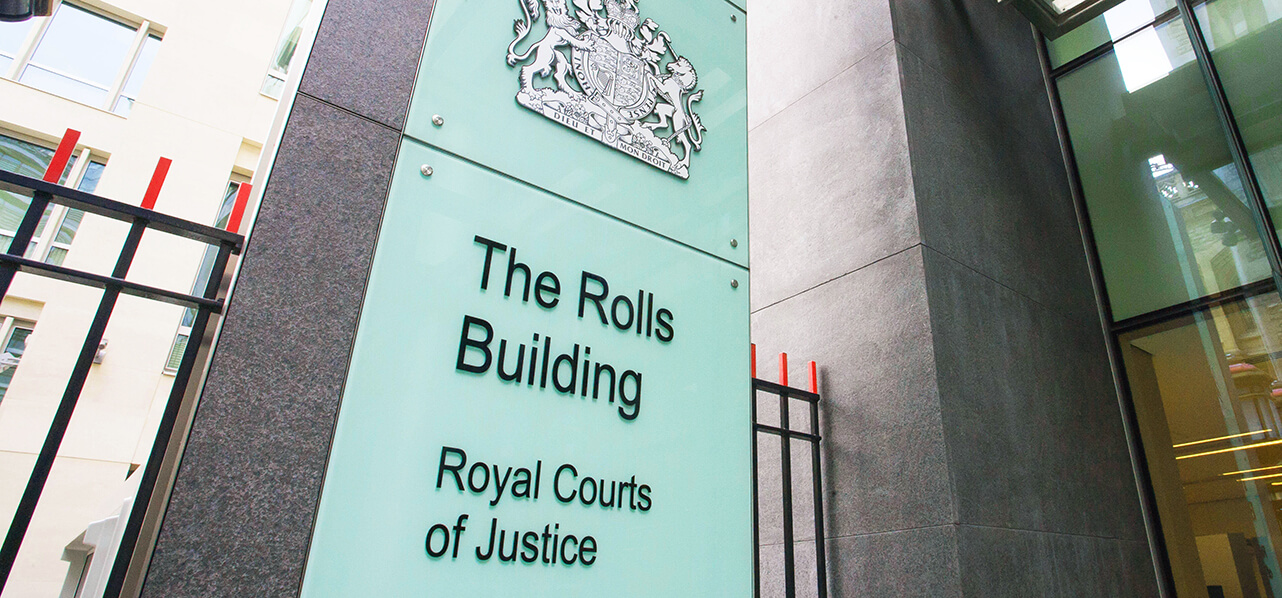Partner Sydney
"Understanding the regulator is key to effectively and efficiently engaging with any regulatory regime, including its decision-making process."
This article forms part of Watson Farley & Williams’ Deep Seabed Mining Insight Series, which draws on the firm’s unparalleled experience and expertise in deep seabed mining matters to provide insightful, timely and commercially relevant updates on deep seabed mining legal and regulatory issues. Upcoming topics include the role and rights of States sponsoring deep seabed mining contractors, the obligations and rights of deep seabed mining contractors, and deep seabed mining dispute settlement options. Previous topics include a preview of the recent July 2023 session of the International Seabed Authority.
Introduction
The United Nations Convention on the Law of the Sea (“UNCLOS”) establishes a unique regulatory framework for the prospecting, exploration and exploitation of the seabed and ocean floor beyond the limits of national jurisdiction (the “Area”). Central to that framework is the International Seabed Authority (“Authority”), which elaborates rules, regulations and procedures (“RRPs”) and considers applications for plans of work for activities in the Area. Understanding the regulator is key to effectively and efficiently engaging with any regulatory regime, including its decision-making process. This article explains the key aspects of the Authority that are relevant to member States and contractors in the Area, that they should consider when seeking to protect and promote their interests in the development and operation of the Authority’s deep seabed mining regulatory regime.
Background
Part XI of UNCLOS, along with the Agreement relating to the Implementation of Part XI of UNCLOS (“1994 Agreement”), are the primary international instruments for the regulation of activities in the Area. UNCLOS designates the Area as the common heritage of all humankind and specifies that its resources can only be recovered in accordance with Part XI, the 1994 Agreement and any RRPs adopted by the Authority.
"The informal working group meetings have been open to observers and other stakeholders. They have been invaluable avenues for a variety of stakeholders to monitor the progress of and contribute to the development of the draft regulations."
The Authority, which is based in Jamaica, is the organisation through which UNCLOS States Parties organise and control activities in the Area for the benefit of all humanity. All UNCLOS States Parties are members of the Authority. The key organs and subsidiary bodies of the Authority are:
- The Assembly: the Authority’s supreme organ which consists of one representative from each State Party.
- The Council: the Authority’s executive organ, which is made up of 36 members that are elected by the Assembly across five chambers:
• a chamber representing States that are major consumers of relevant commodities;
• a chamber representing States that are major investors in the Area;
• a chamber representing States that are major exporters of relevant minerals;
• a chamber representing developing countries and States with special interests; and
• a chamber to ensure there is equitable geographic distribution of Council seats.
- The Legal and Technical Commission (the “Commission” or “LTC”): an independent expert subsidiary organ of the Council that is currently made up of 41 technical experts elected for five-year terms. LTC experts must have appropriate qualifications relevant to activities in the area such as oceanography, protection of the marine environment, or economic or legal matters relating to ocean mining.
- The Finance Committee: a body made up of 15 members elected by the Assembly for five-year terms that deals with the administration of the Authority’s financial and budgetary arrangements.
At present, two of the Authority’s main roles are:
- elaborating and adopting RRPs for exploitation activities in the Area, including regulations to protect the marine environment from serious harm; and
- considering and approving plans of work for exploration and exploitation activities in the Area.
"A proper understanding of the processes for the adoption of RRPs and how applications for plans of work will be considered by the Authority is critical for prospective contractors for exploitation."
Each of these functions is subject to specific decision-making procedures and requirements under UNCLOS and the 1994 Agreement.
Adopting rules, regulations and procedures
The RRPs contain the elaborated rules and requirements that regulate activities in the Area and are binding upon operators in the Area. RRPs relating to exploration and exploitation activities are adopted by the Authority through a process involving the LTC, the Council and the Assembly.
First, the LTC formulates and submits proposed RRPs to the Council. As the technical expert body, the LTC has the primary responsibility for the drafting of the RRPs which can be highly detailed and technical documents. It is the LTC’s role to ensure that all relevant factors are taken into account when preparing RRPs for the Council’s consideration. The LTC makes its decisions on RRPs by majority vote.
Second, the Council considers and provisionally adopts RRPs recommended by the LTC. The RRPs are then applied provisionally until they are approved by the Assembly. The Council’s elaboration and provisional adoption of RRPs is an exhaustive process, and all UNCLOS member States are able to participate (although only Council members are able to vote). The Council’s provisional adoption of RRPs is done on a consensus basis with provisions for the establishment of a conciliation commission to find consensus in every instance.
Third, the Assembly must then approve the RRPs for them to be considered fully adopted. The approval should be provided on a consensus basis. But, if this is not possible, the Assembly may approve RRPs through a two-thirds majority of members present and voting. If the Assembly does not approve the RRPs, they are sent back to the Council for further consideration.
Key contacts
Special Counsel Sydney
Senior Associate Sydney
Associate Bangkok
Partner London
Partner Singapore
"Understanding the Authority’s mandate can help prospective contractors to better target their engagement, including with relevant UNCLOS States Parties."
To date, the Authority has adopted three sets of regulations, all of which relate to prospecting and exploration activities in the Area. The Authority has also been working on regulations governing exploitation activities since at least 2011.
Considering and approving plans of work for activities in the Area
Activities in the Area can only be undertaken pursuant to an approved plan of work, which takes the form of a contract with the Authority. Applications for plans of work are approved by the Authority through a process involving the LTC and Council.
First, following confirmation from the Secretary-General that the application for a plan of work is complete, the LTC receives the application and assesses it against the relevant requirements of UNCLOS and relevant RRPs. If the plan of work meets the applicable requirements, the LTC recommends its approval by the Council. The Authority may also involve stakeholders in its consideration of a plan of work via its consultation and engagement procedures.
Second, the Council considers the LTC’s recommendation on the proposed plan of work:
- if the LTC recommends approval, the Council must approve the plan of work unless two-thirds of members present and voting vote against approval, and a majority of the members of each of the five chambers of the Council decide to disapprove the plan of work; and
- if the LTC recommends disapproval, the Council is still able to approve a plan of work if two-thirds of members present and voting vote for approval, and there is no majority in any of the chambers of the Council representing major consumers, investors or importers, or among the developing countries in the other chambers, that opposes approval.
If the Council fails to make a decision within 60 days, the plan of work is deemed to be approved, unless the Council decides to extend this time period.
"A proper knowledge of these processes and requirements will better prepare prospective contractors if they ever need to challenge an unlawful decision by the Authority or enforce their rights."
Outside participation in the work of the Authority
The regulatory and decision-making processes outlined above focus on UNCLOS States Parties and technical experts, who are primarily responsible for the elaboration and adoption of RRPs and approval of plans of work for exploration and exploitation. However, there are additional mechanisms for other stakeholders, including members of the public, to engage in the work of the Authority.
Non-UNCLOS States, international organisations and non-governmental organisations (“NGOs”) are able to apply for observer status with the Authority. This enables them to participate in Authority meetings but does not provide any voting rights.
The Authority has also arranged workshops and sessions on scientific and technical issues relating to deep seabed mining to broaden the range of entities that can contribute to its work. These have been open to a range of participants including from civil society, private industry, and academia.
Prospective contractors and interested parties are also able to engage by way of their Sponsoring State or States. This is particularly relevant to the work of the Council where UNCLOS States Parties directly consider and decide upon the contents of RRPs and the approval of plans of work.
In 2018 and 2020 the Authority also established “informal working groups” to advance discussions on the draft regulations relating to exploitation. This includes specific groups working on the protection and preservation of the marine environment; inspection, compliance and enforcement; institutional matters; the financial terms of contracts; and the President’s Text – a catchall document containing matters not covered by another group, including the rights and obligations of contractors and general procedures, standards and guidelines. The informal working group meetings have been open to observers and other stakeholders. They have been invaluable avenues for a variety of stakeholders to monitor the progress of and contribute to the development of the draft regulations, which will be buttressed by stakeholders’ formal consultation roles during a review of a plan of work.
Implications for prospective contractors
The process for the adoption of RRPs for exploitation and associated decision-making requirements, while complex, are clearly outlined in UNCLOS and the 1994 Agreement. A proper understanding of the processes for the adoption of RRPs and how applications for plans of work will be considered by the Authority is critical for prospective contractors for exploitation, including because:
"The Authority’s recent session in July demonstrates that the coming 12 to 18 months will be critical to the development of the deep seabed mining industry and the regulatory regime that undergirds it."
- visibility of the appropriate stages of the Authority’s process for the adoption of RRPs can ensure prospective contractors are better prepared for and ready to operate in accordance with likely regulatory requirements;
- understanding the Authority’s mandate can help prospective contractors to better target their engagement, including with relevant UNCLOS States Parties. It also will ensure they are ready to make use of opportunities such as the informal working groups to contribute to the development of suitable RRPs and protect their interests in that process; and
- a proper knowledge of these processes and requirements will better prepare prospective contractors if they ever need to challenge an unlawful decision by the Authority or enforce their rights, including through UNCLOS’s regime for compulsory and binding dispute settlement.
Roadmap and timeline for the adoption of RRPs for exploitation
The Authority was legally obligated to elaborate and adopt all necessary RRPs for exploitation by 9 July 2023 following a request from the Republic of Nauru in 2021. The Authority and its member States failed to meet this deadline, thus breaching the 1994 Agreement. Following the expiry of the 9 July 2023 deadline, the 1994 Agreement permits applicant contractors to submit plans of work for exploitation, which the Authority is obliged to consider and provisionally approve.
On 21 July 2023 the Council adopted a decision recognising “the expiration of the two-year deadline on 9 July 2023” and setting out a roadmap for the elaboration and adoption of RRPs for exploitation. The roadmap aims to have the RRPs adopted during the thirtieth session of the Authority, with Council meetings planned for November 2023, March 2024, and July 2024. It also envisages the preparation of a consolidated negotiating text of the RRPs for exploitation after the end of the third part of the Authority’s twenty-eighth session (which is scheduled to end on 8 November 2023).
The Council also decided that if an application for a plan of work was submitted before RRPs for exploitation have been adopted that it would consider “the understanding and application of” the relevant provision of the 1994 Agreement “with a view to reaching, as a matter of priority, a common understanding and accordingly reaching a decision, including the possible issuing of guidelines or directives, without prejudice to the Commission’s mandate.” This decision reflects the Council’s intention to preserve the right of applicant contractors to submit plans of work for exploitation in the absence of the adoption of the RRPs and to have their application assessed based on the criteria contained in Section 1, Paragraph 15(c) of the Annex to the 1994 Agreement.
Conclusion
The Authority’s recent session in July demonstrates that the coming 12 to 18 months will be critical to the development of the deep seabed mining industry and the regulatory regime that undergirds it. As such, now is the time for credible and effective engagement by interested stakeholders including prospective contractors, to contribute to the Authority’s work. Such engagement can only occur based on a proper and considered understanding of the operations of the Authority. This article has provided an introduction to some of the key processes and issues. However, bespoke advice directed at specific circumstances and interests will be key to prospective contractors understanding and engaging with the Authority as it charts the future of deep seabed mining in the Area.
Key contacts
Partner Sydney
Special Counsel Sydney
Senior Associate Sydney
Associate Bangkok
Partner London
Partner Singapore








